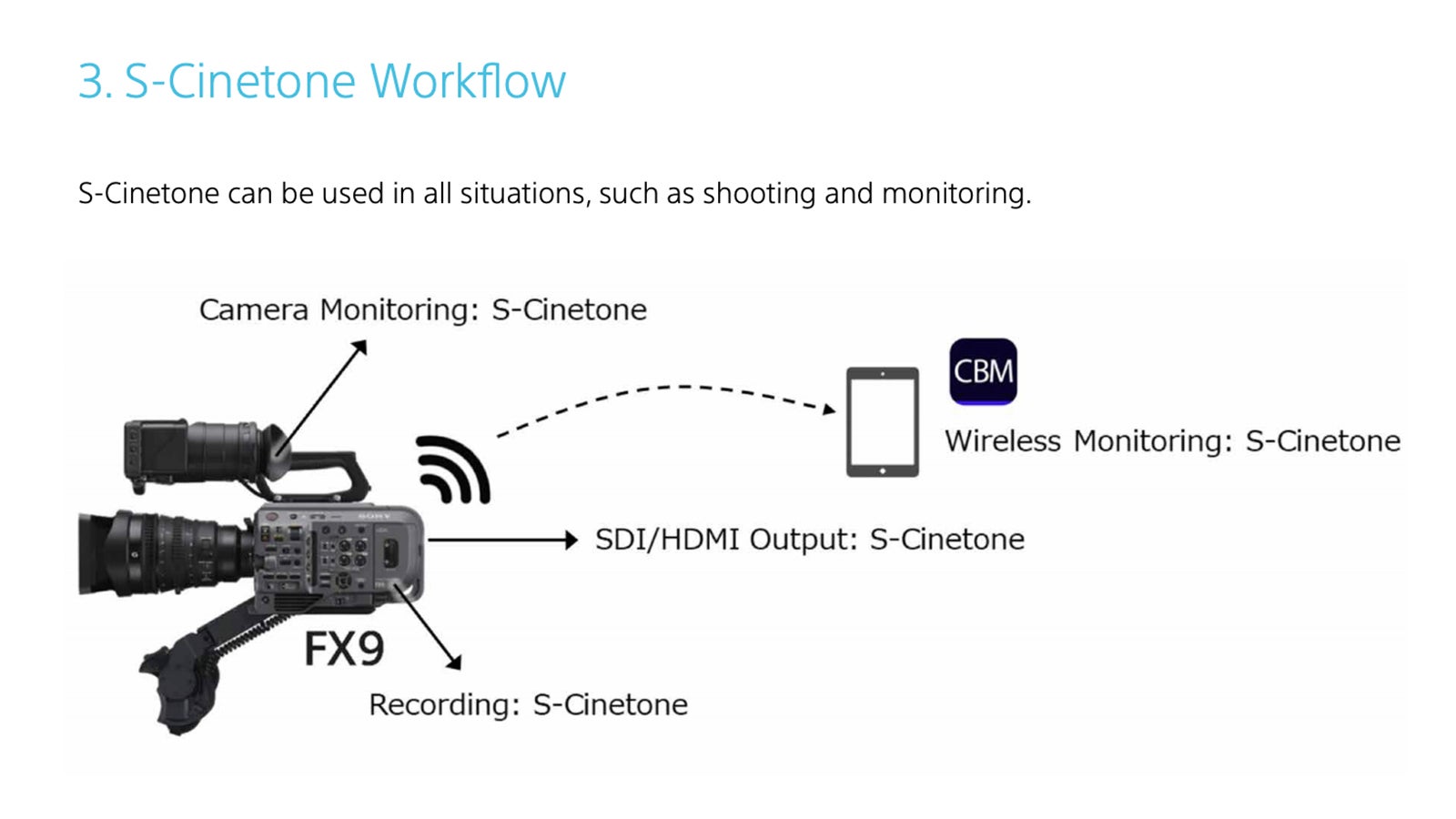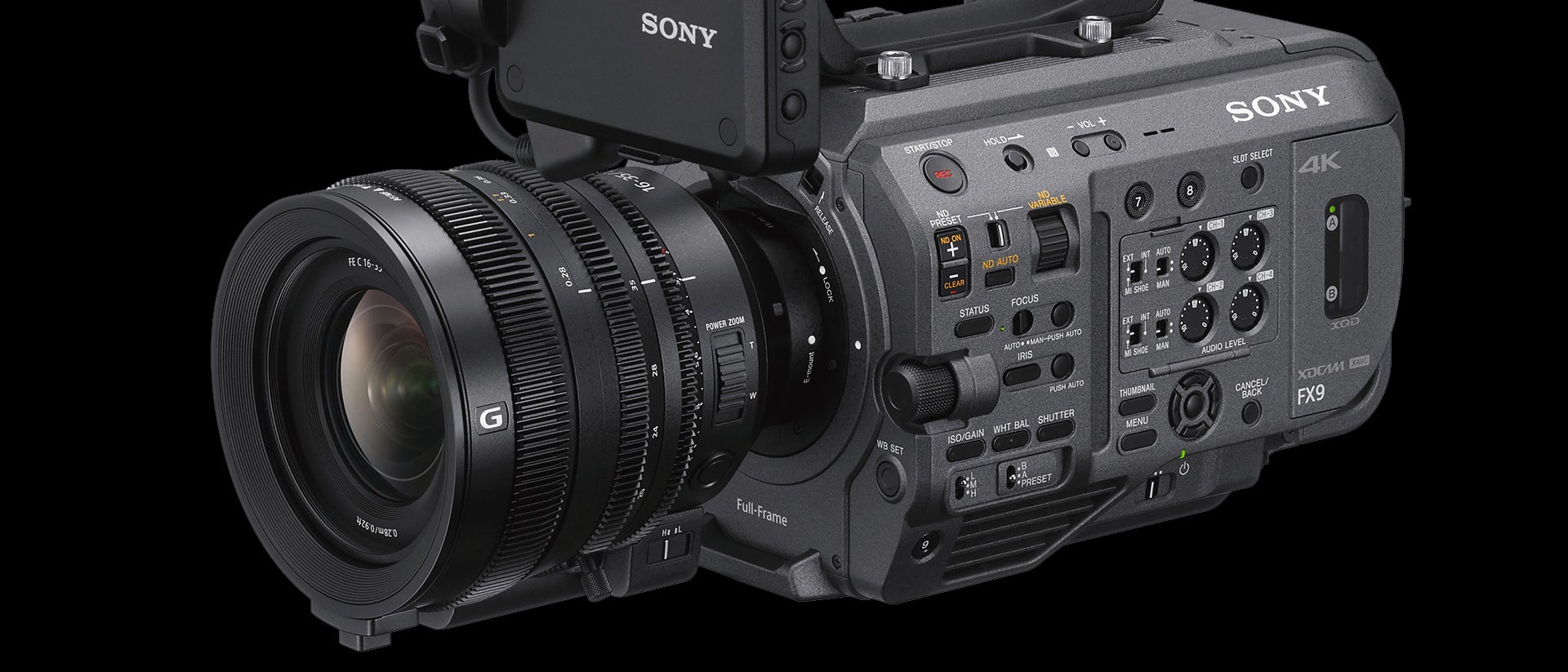
01-06-2021 - Gear, Technology
S-Cinetone Whitepaper – Read it Here
By: SonyCine Team
1. S-Cinetone Overview
1.1 Development Background Sony has launched many cameras and camcorders for the professional market. In addition to broadcast production, we have contributed to high-end content creation for post-production workflows such as Cinema, Drama and Documentaries. Sony has a wide range of products, from the handy camcorder area equipped with small sensors, to the FS7/FS5 series with large format sensors. In addition, Sony has for many years had CineAlta cameras which target the High-end Cinema market, and we introduced the CineAlta VENICE in 2017. Image expression is changing with the times. With the advent of cameras that can record wide latitudes, such as VENICE, it has become possible to shoot richer material with high natural dynamic range using RAW and X-OCN recording, or through the use of log gamma curves such as Sony’s S-log3 curve.
With the release of the FX9, a new video look “S-Cinetone” is introduced. Installed in the FX9 “S-Cinetone” expresses the cinematic look cultivated from the Color Science in VENICE but tailored for the video world. Whereas VENICE and s709 provides images close to the film color found in movie and drama productions, “S-Cinetone” provides images with a more cinematic look in tone and color for the video world. As a result, you can create richer content compared to conventional processing.
Link to original whitepaper: https://pro.sony/s3/2020/03/24095333/S-Cinetone-whitepaper_v2.pdf
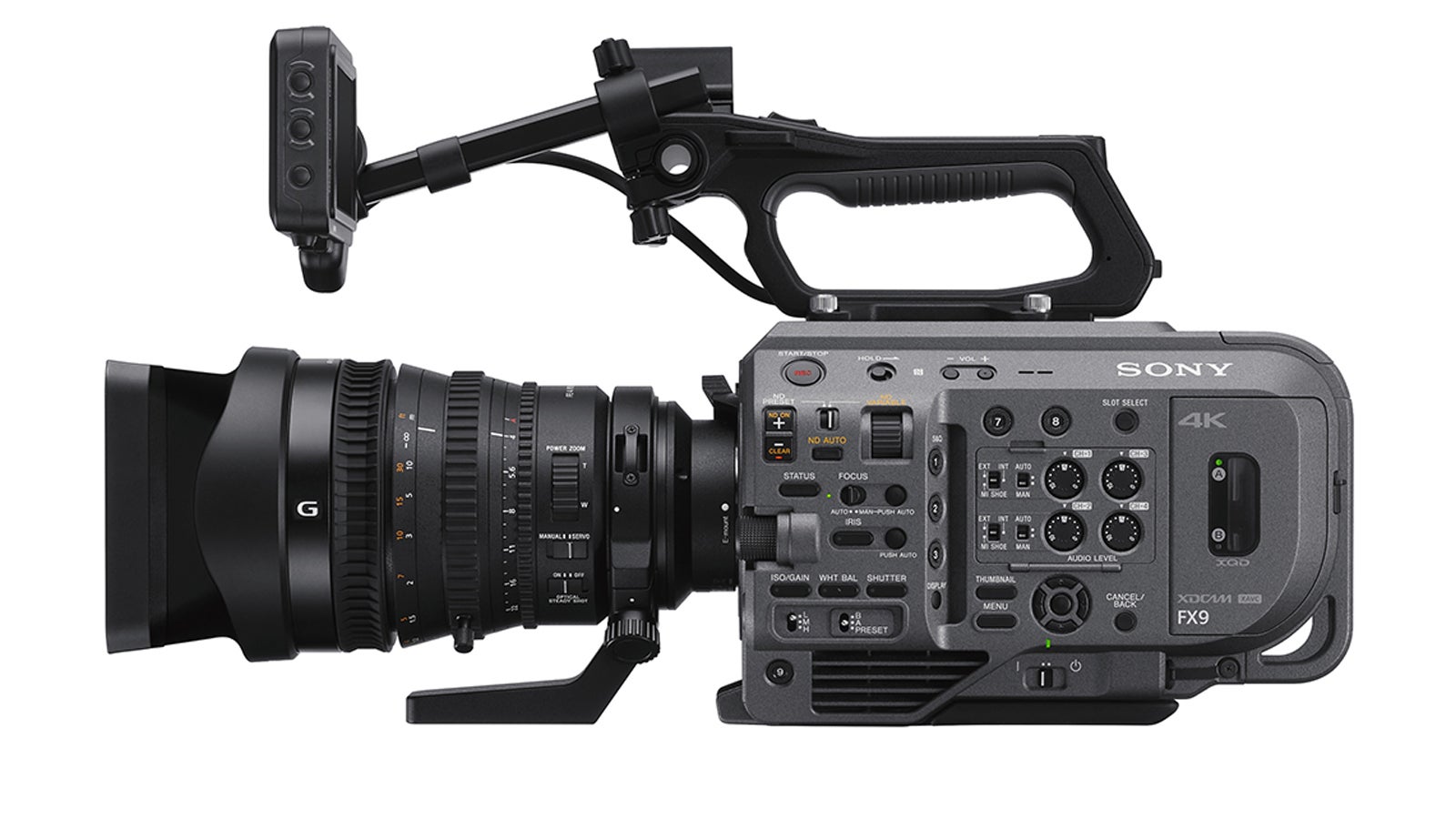
1. S-Cinetone Overview
1.1 Development Background Sony has launched many cameras and camcorders for the professional market. In addition to broadcast production, we have contributed to high-end content creation for post-production workflows such as Cinema, Drama and Documentaries. Sony has a wide range of products, from the handy camcorder area equipped with small sensors, to the FS7/FS5 series with large format sensors. In addition, Sony has for many years had CineAlta cameras which target the High-end Cinema market, and we introduced the CineAlta VENICE in 2017. Image expression is changing with the times. With the advent of cameras that can record wide latitudes, such as VENICE, it has become possible to shoot richer material with high natural dynamic range using RAW and X-OCN recording, or through the use of log gamma curves such as Sony’s S-log3 curve.
With the release of the FX9, a new video look “S-Cinetone” is introduced. Installed in the FX9 “S-Cinetone” expresses the cinematic look cultivated from the Color Science in VENICE but tailored for the video world. Whereas VENICE and s709 provides images close to the film color found in movie and drama productions, “S-Cinetone” provides images with a more cinematic look in tone and color for the video world. As a result, you can create richer content compared to conventional processing.
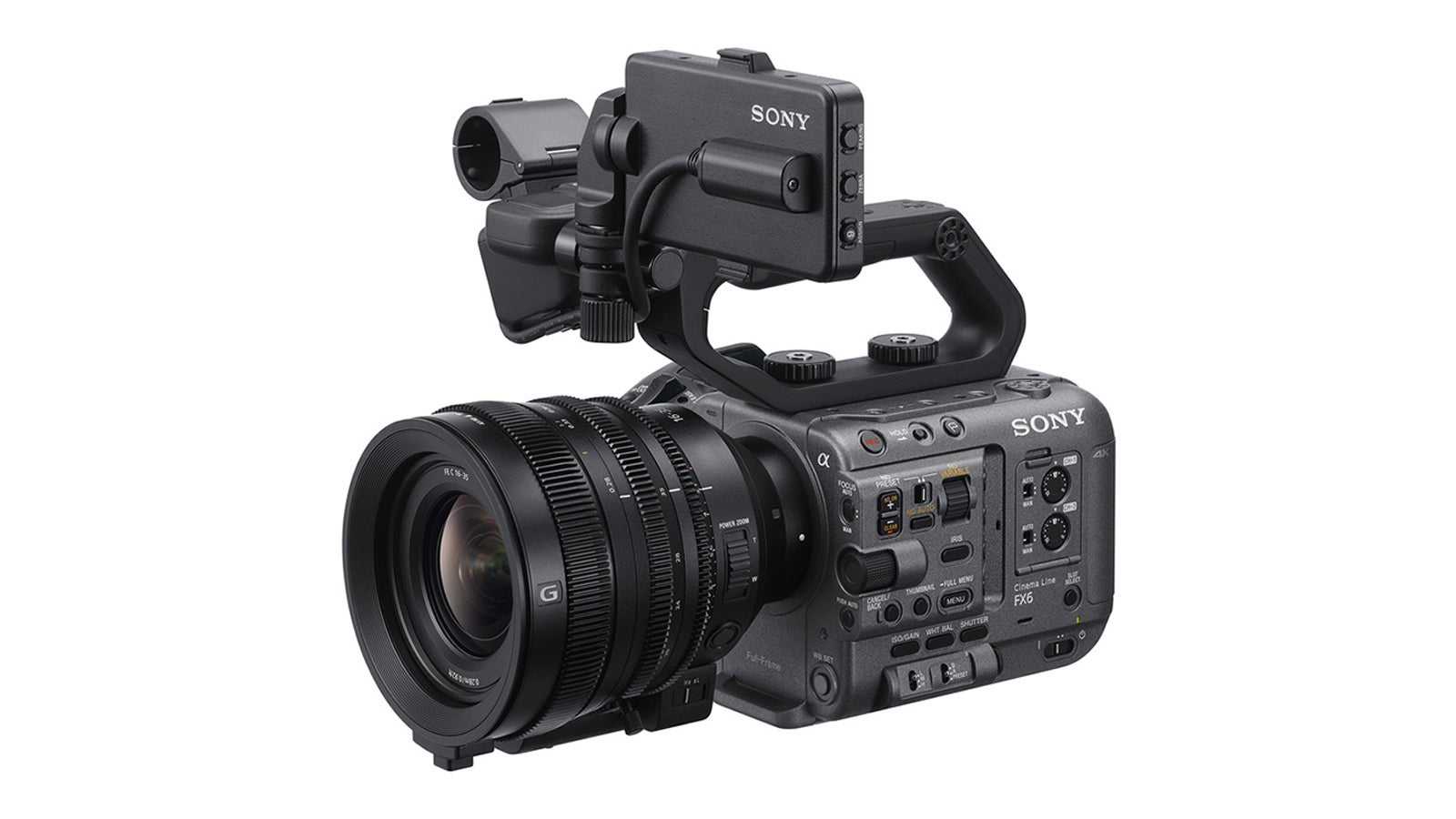
1.2 Difference between s709 and S-Cinetone Regarding the general workflow of high-end cinema content creation, almost all digital cinema cameras record RAW or X-OCN and then these files are color graded in post-production to create high-quality content. For this workflow, s709 was developed as a monitoring look for when recording RAW. Since the main purpose is monitoring on set, s709 aims to provide film-like characteristics. The important point is that s709 was not designed to be used for the final look of the content, however it can be used as a starting point for color grading for many types of movie and drama scenes.
The post production color grading process needs a lot of time and can be expensive. In the content creation market, there is also a demand for creating richer content but within a limited time and budget and therefore without extensive post production, or indeed any at all. Sony developed S-Cinetone to meet these demands. S-Cinetone builds on VENICE’s popular cinematic look with a film like color and pleasing rendering of skin tones that has gained such a good reputation in the market. But S-Cinetone is different in that it has been designed to quickly and easily create rich looking final content without the need for expensive post production.
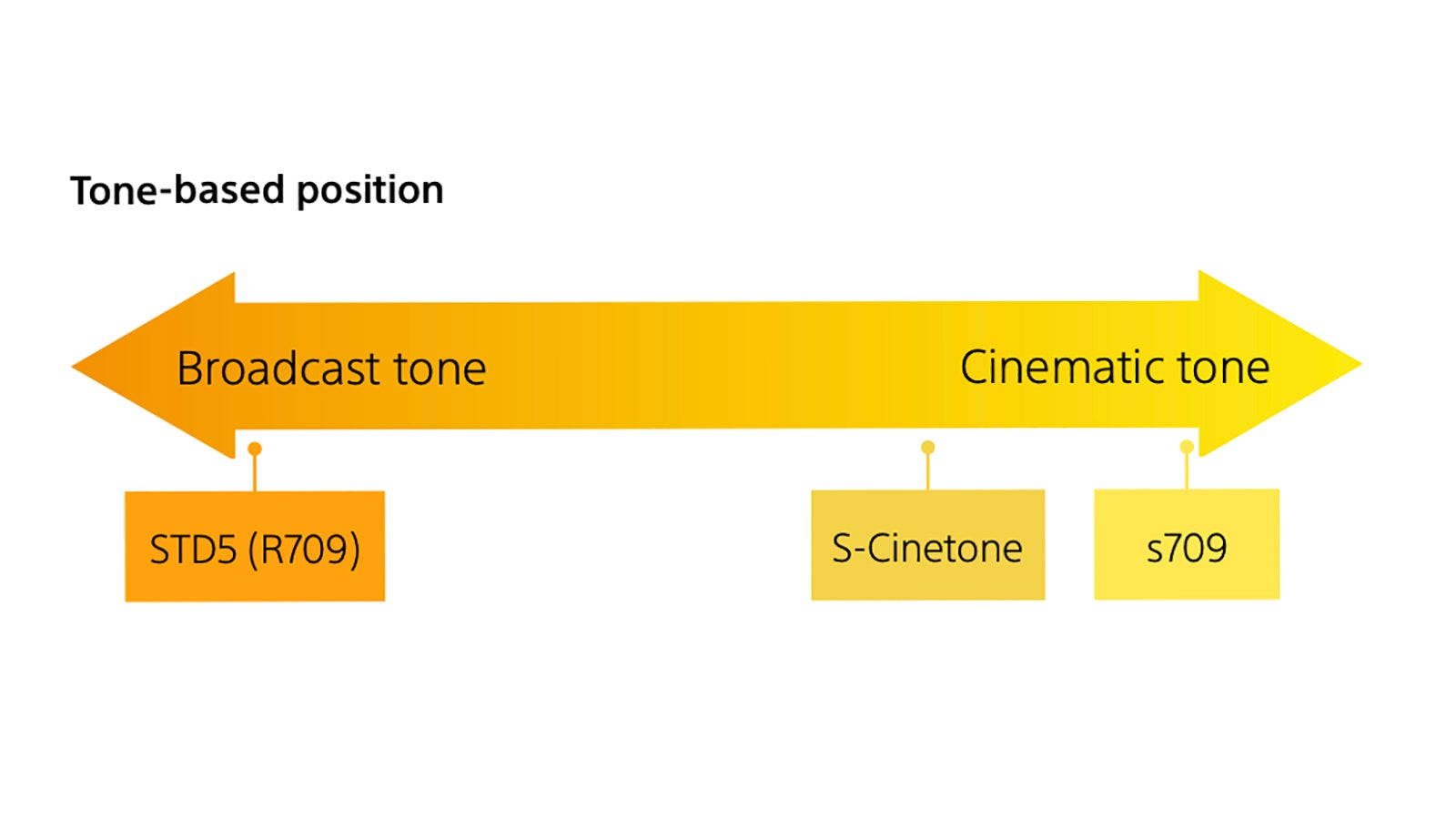
2. S-Cinetone Characteristics
2.1 Look Position: The figure above shows the tone-based positions of the typical looks on Sony’s Large-Format-Sensor camcorders: s709, S-Cinetone and STD5 (R709).
s709: The curve of s709 is close to film characteristics. It’s low contrast and good rendition of highlights. The black level is 3% video level.
S-Cinetone: The base curve of S-Cinetone is BT.709, but it adopted some essences of film-tone. It has high contrast tone in the low luminance levels and low contrast tone in the high luminance levels. The black level is lower than s709 and STD5 (R709).
STD5 (R709): STD5 (R709) is a gamma of broadcast video. The base of the curve comes from “Recommendation ITU-R BT.709”. In the default setting, the black level is 3% video level.
Note: “STD5” is the menu name of gamma setting for PXW-FX9.

2.2 Overall S-Cinetone has the overall characteristics as seen in these graphs, compared to traditional Video. - Since high-light contrast is low, the look of high lights is soft and light. - Since low-light contrast is a little bit higher, the look of low light is strong and more highly saturated. Because of these characteristics, you can control the look by adjusting the exposure.
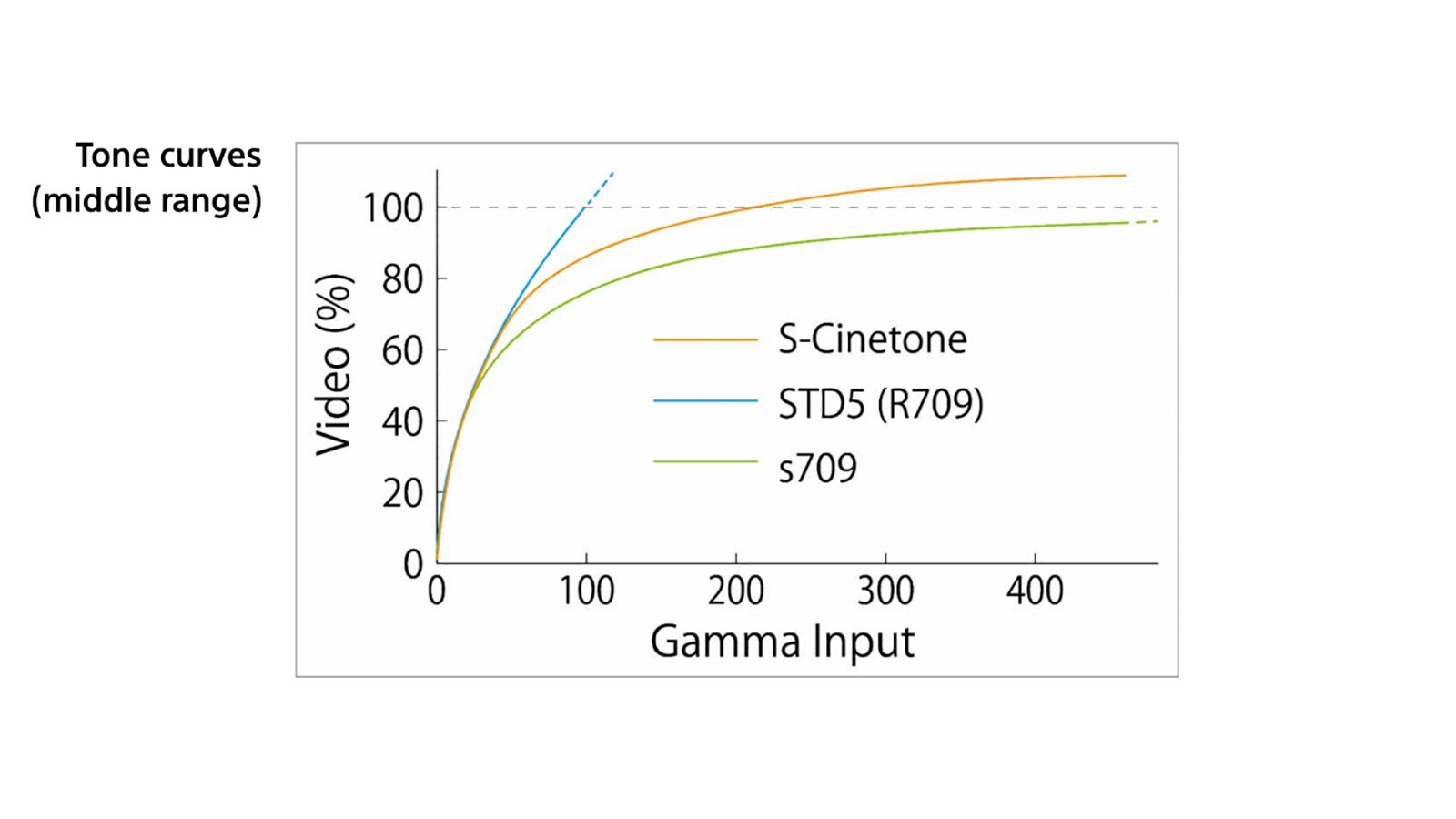

2.3 High-light characteristics The contrast of the high-light part lowers gradually from 70% video level, and the curve retains a gentle slope all the way to the saturation level, in order to retain a degree of high-light contrast. Because of this, in the high-light area, objects will tend to look soft, but details will still remain all the way to the saturation level. These high-light characteristics are useful not only for creating smooth images but also for preventing non-main-objects from standing out too much. In addition, it’s easy to adjust the high-light area in post-production compared to traditional video because of the slope near the saturation level.
2.4 Low-light characteristics The low-light part of the curve enhances the contrast a little bit. Because of this, images of objects tend to look clear and rich-colored.
2.5 Black level and shadow characteristics The black level of S-Cinetone is 1.5 % video level. It’s a bit lower than that of traditional video. Together with the low-light characteristics mentioned above, the black level is adjusted so that the darkest shadow area of objects might be just invisible. However, it is not clipped completely, so it could be made visible by setting the black to a higher level, e.g. 3%.
2.6 Color reproduction characteristics Skin color is the most valued color, and the total color reproduction characteristics of S-Cinetone are natural. However, because of the curve, the reproduction of colors change, depending on their levels. For instance, if you shot objects with a slightly darker exposure, colors tend to be reproduced more richly colored.
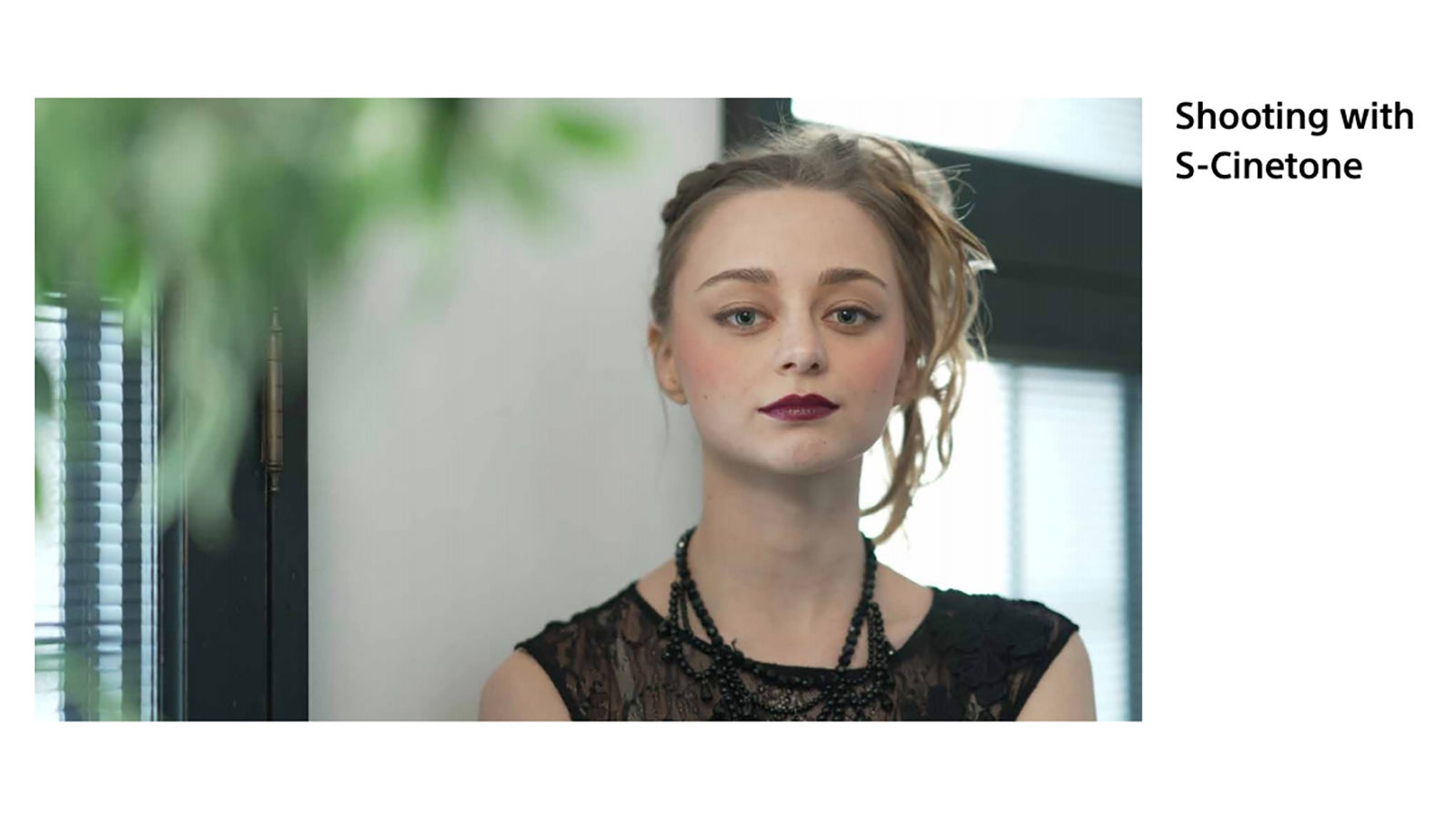
2.7 Dynamic range The dynamic range of S-Cinetone is 460%. Although it’s lower than that of S-Log3, the balance between the dynamic range and the noise level is good for high quality video images.
